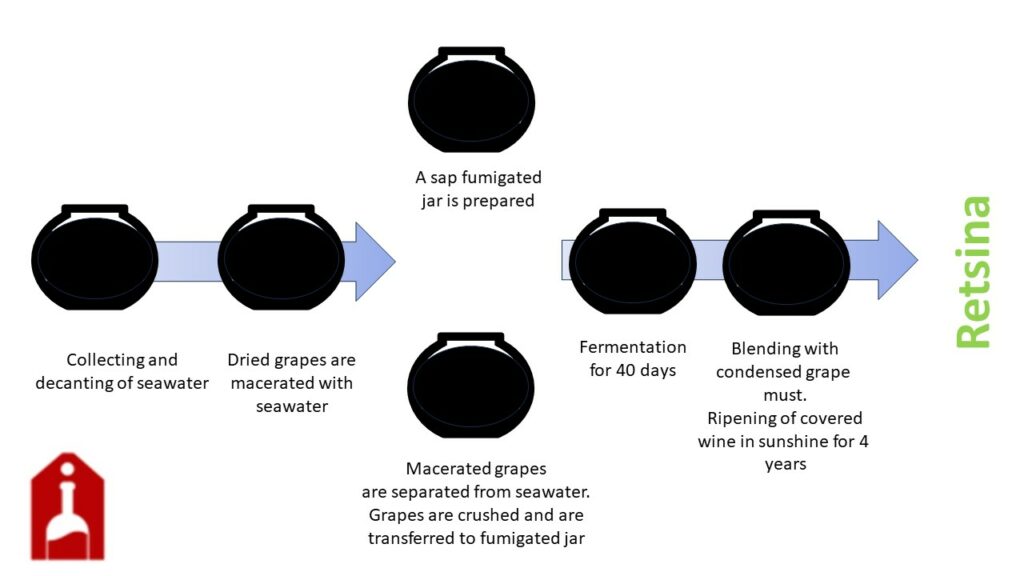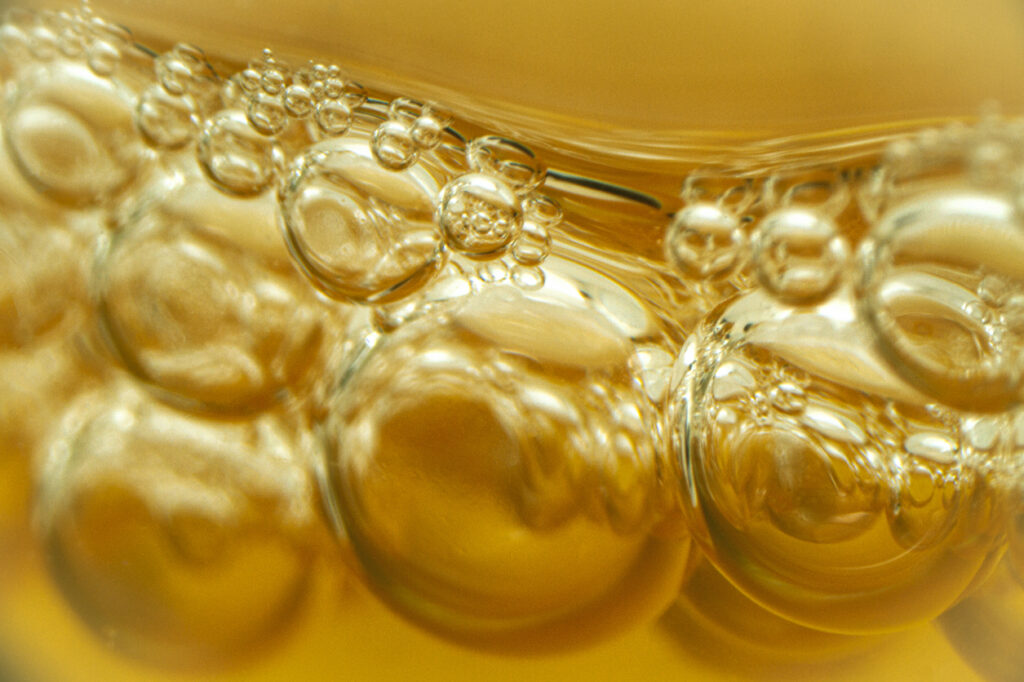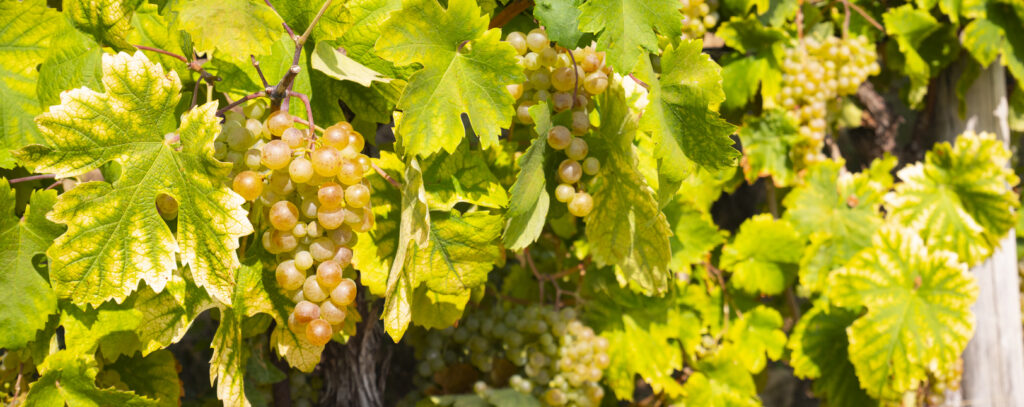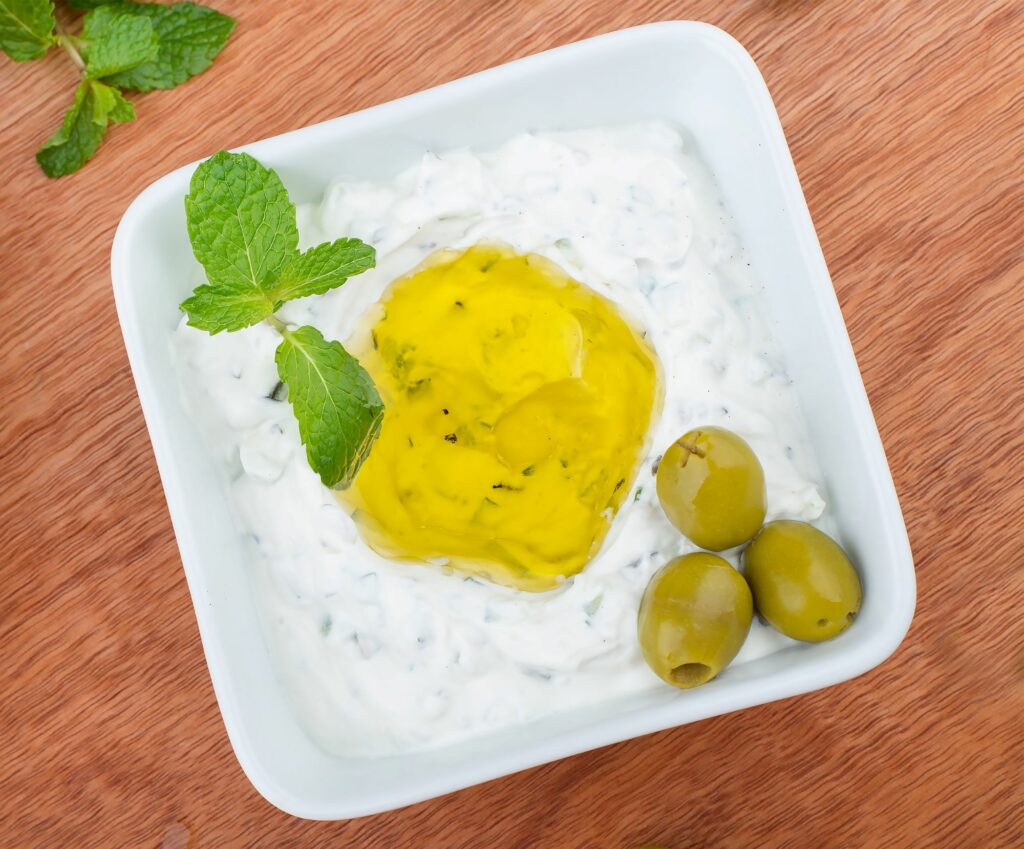Retsina wine, a unique and polarizing elixir that traces its roots back to ancient Greece, has captivated both the curious connoisseurs and adventurous imbibers of the modern world. With its distinct flavors and aromas, this traditional Greek wine holds a storied past that transcends time.
Made from grapes grown on the sun-drenched hillsides of Greece, Retsina’s allure lies not only in its taste but also in the centuries-old winemaking techniques employed by skilled craftsmen.

As you embark on a journey through history and culture, let us delve into the captivating story behind Retsina wine—a liquid treasure with a lingering pine resin note that evokes an intoxicating sense of nostalgia.
History of Retsina Wine
Retsina wine, with its unique salty-sweet flavor, has a history as rich and complex as the drink itself. It stands out among greek wines. This ancient Greek wine dates back thousands of years and owes its distinctive taste to the addition of pine resin during fermentation.

The Greeks believed that this practice helped preserve the wine during long voyages by sealing the amphorae with pine resin soaked cloth to seal them.
Pine Resin and Salt Water
The combination of pine resin base wine, and salt water creates a fascinating blend of flavors in Retsina wine. The subtle infusion of resin imparts a distinct earthy character that dances on the palate, while the touch of saltiness adds depth and complexity to each sip. This marriage between sweet grape and pungent pine is truly one-of-a-kind, making Retsina an acquired taste that continues to captivate adventurous wine lovers around the world.

As modern winemaking techniques have evolved, producers have been able to strike a delicate balance between these flavor elements, resulting in refined and harmonious Retsina wines that appeal to a wider audience. Today, this historical beverage not only offers a glimpse into Greek cultural heritage but also acts as a gateway for enthusiasts seeking new and exciting tasting experiences beyond traditional wines.
Retsina in ancient Greece
Cato, an ancient writer from 234 BC to 149 BC, documented a recipe for a type of wine known as leucocoum or white wine of Kos. To produce this wine, the first step involved collecting seawater from a calm day, far away from the shore, approximately 70 days before the grape harvest.

Role of Seawater
The collected seawater would then go through two decanting processes to eliminate any sediment in preparation for the upcoming harvest. After harvesting the grapes, they would be spread out under the sun to dry for several days. After drying, the grapes’ stems would be removed and they would be placed in large earthenware jars that were filled one-fifth with decanted seawater. To enhance absorption, the grapes were tossed into the jars along with the seawater.

Maceration
During maceration of the seawater berry blend, another jar was prepared by fumigating herbs on a hot tile that had been coated with sap. After 3 days, the berries were extracted from the seawater jar. They were crushed before transferring their must into the sap-fumigated jar where it would undergo fermentation for approximately 40 days. Eventually, this fermentation mixture would be poured into large Coan Amphorae. Finally it was blended with condensed grape must (referred to as sapa) in order to enhance its sweetness.

Subsequently, this concoction produced would be left outside under cover in sunlight for a duration of 4 years. The creation process of Leucocoum required extensive labor. It likely resulted in a wine that held moderate value during the earliest days of its era. It found its way to various corners of the Roman empire through exportation.
How did Retsina actually taste in historic Greece?
It is solely due to someone’s madness that we are even aware of how leucocoum tastes! In 1991, André Tchernia bravely ventured into recreating this elusive wine in the enchanting vicinity of Nice, France. Once fermentation concluded, an unpleasant aroma reminiscent of decaying marshlands permeated the air.

Nonetheless, after careful ageing in ceramic jars for two months, this offensive scent diminishes. It unveiled an exquisitely flavored white wine with a subtle shade and notes resembling stewed apples. The professional tasters who tasted it were taken aback by its remarkably high salt content. They were astonished to discover that rather than decomposing as expected, the wine had achieved an admirable state of stability.
Retsina Wine Grapes
Retsina is a uniquely Greek wine, and one of its defining characteristics is the use of specific grape varieties. The main grape variety used in the production of Retsina is Assyrtiko. Winemakers in Greece grow this white grape varietal primarily, particularly on the island of Santorini. Assyrtiko grapes show a high acidity, which gives Retsina its refreshing and crisp taste.

In addition to Assyrtiko, winemakers use other grape varieties such as Savatiano and Rhoditis in the production of Retsina. Savatiano vine is another white grape variety native to Greece. You can find it around Athens. It can produce wines with low acidity levels, when used in combination with Assyrtiko. This varietal helps to balance out the flavors and adds complexity to Retsina. Rhoditis, on the other hand, is a pink-skinned grape variety that contributes floral and fruity aromas to the wine.

The combination of these different grapes creates a unique flavor profile that sets Retsina apart from other wines. The intense acidity from Assyrtiko grapes blended with the delicate flavors brought by the Savatiano grapes and Rhoditis results in a well-balanced wine with citrus notes. It shows hints of peach and pine resin. This yields an overall refreshing character that pairs perfectly with Mediterranean cuisine.
Nowadays winemakers use these white wine grape varietals for a number of greek wines which wine enthusiats love.
What Does Retsina Wine Taste Like?
Its unique flavor profile sets it apart from other wines in the world. Wine lovers appreciate modern Retsina for its sharp pine resin aroma that can be quite polarizing at first encounter. Some find this scent off-putting, while others embrace its refreshing and rustic character.

When it comes to taste, Retsina offers an intriguing combination of flavors. The resin imparts a pronounced pine-like bitterness on the palate, blending with hints of citrus and herbs. This gives the wine a bold and savory quality that cuts through fatty or oily dishes remarkably well. It is important to note that not all Retsinas are created equal. Some may have more prominent resin notes than others due to variations in production techniques or grape types used.

While Retsina’s distinctive taste may not appeal to everyone immediately, it is well worth exploring for those seeking new and authentic experiences in their wine journey. You can enjoy it alongside traditional Greek cuisine or as an adventurous sip on its own. Modern Retsina offers a fascinating glimpse into the rich cultural tapestry of Greece and its ancient winemaking traditions.
Is Retsina dry or sweet?
Retsina is primarily made from white grape varieties such as Roditis and Savatiano. During the retsina production process, aleppo pine resin – obtained from Aleppo pine trees – is added to fermenting grape juice.
This ancient practice gives Retsina its distinct flavor and aroma. However, it also affects the perception of sweetness in the wine. While some Retsinas may have a subtle hint of sweetness due to residual sugars from fermentation, you can consider most as dry because they do not contain high levels of residual sugar.

Ultimately, whether one considers Retsina dry or sweet largely depends on their own sensory experiences. How you interpret different elements in wine tasting is key.
Retsina Wine and Food Pairing
When it comes to foodpairing, resinated wine wine might not be the first choice that comes to mind. However, this traditional Greek wine has a unique flavor profile that can complement a range of dishes. The distinct pine resin taste of Retsina adds an intriguing element to foodpairing. This makes it an excellent choice for adventurous diners.
Seafood dishes with Retsina wines
One surprising pairing that works well with Retsina is seafood. The light and crisp nature of the wine cuts through the richness of fish and shellfish. It enhances their flavors without overpowering them. Whetheryou grill an octopus with lemon or prepae a delicate seafood pasta, Retsina brings out the best in these dishes with its aromatic and refreshing qualities.

Greek Appetizers (Meze) and Food with Retsina
For a more unexpected twist, try pairing Retsina with Mediterranean cuisine. The herbal notes in the wine work harmoniously with ingredients like olives, olive oil, yogurt, mint and herbs. You can commonly find these notes in Mediterranean dishes. From spanakopita to moussaka, Retsina can elevate these classics by adding a zesty and earthy undertone that complements their robust flavors perfectly.

In conclusion, don’t be afraid to experiment with Retsina wine when it comes to foodpairing. Its unique taste can bring new dimensions to seafood and Mediterranean cuisine. At the same time it offers a refreshing alternative to more conventional choices.
Sources
- Kourakou-Dragona, Stravroula. Vine and Wine in the Ancient Greek World. Athens: Foinikas Publications, 2015. Print.
- de Agricultura by Cato
- When Not Just Any Wine Will Do…? The Proliferation of Coan-type Wine and Amphoras in the Greco-Roman World
- Eastern Wines on Western Tables: Consumption, Trade and Economy in Ancient Italy, Paulina Komar, Leiden ; Boston : Brill, 2020.

